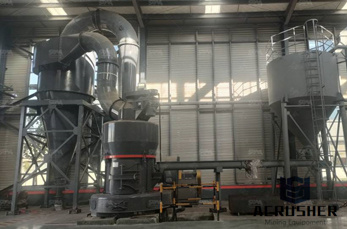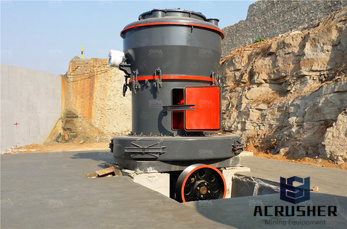(PDF) A Case Study: Ceramic Tile Production ResearchGate
A Case Study: Ceramic Tile Production. ... specially by the wet milling process (including. spray drying) is usually a separated process, often simply called ''atomization'' and ...
 WhatsApp)
WhatsApp)
A Case Study: Ceramic Tile Production. ... specially by the wet milling process (including. spray drying) is usually a separated process, often simply called ''atomization'' and ...

Materials like ores, paints, coatings, adhesives, and ceramic raw materials can all be milled using a wet grinding process. One machine that revolutionized the industry was the horizontal media mill, it incorporates the latest technology in media milling. A horizontal media mill is filled with media, charged and activated by a highspeed agitator.

and dry processing is presented in Figure, and Figure illustrates the wet processing of kaolin. In the dry process, the raw material is crushed to the desired size, dried in rotary dryers, pulverized and airfloated to remove most of the coarse grit. Wet processing of kaolin begins with

The granules of ceramic bodies obtained with these alternative dry milling technologies, apart from drastically limiting energy saving, do not reproduce or replace the intrinsic properties of granules obtained by spray drying, owing to the strong difference in moisture between the outer layers of the granules (dry) and the compact and moist centre.

LB has always considered investment the only way for the improvement of efficiency that results into an increasing ability to better serve the customer, so as to operate according to a logic of actual and continuous partnership.

Ball mills are the most commonly used piece of equipment for milling. However, vibratory mills, attrition mills, and fluid energy mills also are used. Crushing and grinding typically are dry processes; milling may be a wet or dry process. In wet milling, water or alcohol commonly is used as the milling liquid.

Sintered ceramics are very hard and therefore their machining is an expensive, difficult and time consuming process. Ceramic parts may be effectively machined before the final sintering stage either in the "green" (nonsintered powder) compact state or in the presintered "bisque" state.

and fluid energy mills also are used. Crushing and grinding typically are dry processes; milling may be a wet or dry process. In wet milling, water or alcohol commonly is used as the milling liquid. Several procedures are used to purify the ceramic material. Water soluble impurities can be

Sep 18, 2019· Understanding the clay drying process is a great way to protect your work from future cracks and warping. As Snail Scott points out in today''s post, rushing the clay drying process is almost never good and care should always be taken to help pieces dry evenly. Read on for more great advice on drying pottery evenly and without incident.

Custom toll milling services for materials such as food products, ceramics, and pigments. Offers bead, ball, cryo, hammer, and jet milling and jaw crushing services. Capable of processing particles into submicron and nanometer size ranges. Provides processing solution from lab .

Oct 15, 2000· However, in other shops that also apply high speed milling—but apply it for different purposes and different materials—the picture changes. To determine whether dry machining with forced air makes sense for a given high speed milling application, consider four main process factors: Workpiece Hardness

Jan 02, 2014· Acc ton milling environment: •Dry milling: it is done for zirconium oxide low degree of presintering, to avoid moisture absorption avoid drying time of zirconium before sintering. •Wet milling it is done for metals, composite, silicabased ceramics, zirconium oxide with high degree of presintering.

The Black Art of Drying Ceramics Without Cracks Section: Clay Bodies, Subsection: General Description. Anything ceramic ware can be dried if it is done slowly and evenly enough. To dry faster optimize the body recipe, ware cross section, drying process and develop a good test to rate drying performance. Article Text

Some ceramics like boron nitride must be drymachined, because they are porous ceramics and often used in applications where machining oils would be detrimental to the end use applications. The resistance to machining ceramics has a lot to do with a reluctance to subject machine tools to such an abrasive material.

important process of ceramic tlies industries is drying process. Drying is the most energy consuming process in ceramic tiles industries. Drying process separate in two part 1. Drying with the dryer 2. drying with the kiln .In this studies we studied the behavior of the drying curve with the temperature increase in process .And also do the mass ...

Ceramic Inorganic Powder Process Development. Powder Processing Technology, LLC is an experienced processor of ceramic and other inorganic powders. Our professionals have assisted the top materials technology companies around the world for over 30 years.

Manufacturing Advanced Ceramics The process steps in the manufacturing of advanced ceramics such as silicon nitride and sialon, alumina, zirconia and sintered silicon carbide are summarised in the flow diagram below: Raw Material Processes ⇓ Forming Processes ⇓ Sintering ⇓ Diamond Grinding (optional) ⇓ Inspection Each of these stages in the manufacturing process (with the .

The initial step in ceramic tile manufacture involves mixing the ingredients. Sometimes, water is then added and the ingredients are wet milled or ground in a ball mill. If wet milling is used, the excess water is removed using filter pressing followed by spray drying.

Ball milling technique, using mechanical alloying and mechanical milling approaches were proposed to the word wide in the 8th decade of the last century for preparing a wide spectrum of powder materials and their alloys. In fact, ball milling process is not new and dates back to more than 150 years. It has been used in size comminutions of ore, mineral dressing, preparing talc powders and many ...

Air floating can also be done in consort with dust ball milling. The milling process can also reduce particle sizes by too much for an application, so a means of measuring the distribution of ultimate particles is important to be able to set the parameters for the process.

Oct 30, 2015· Wet milling is required when milling glassceramics, such as lithium disilicate, and also when milling feldspathic porcelains and composite resins. Titanium is a metal that requires wet milling. Cobalt chromium is generally milled in a wet mill but may in certain instances be milled dry.

Clay Grinding Milling Process Systems. MS DRY MILLING PLANTS FOR CERAMICS INDUSTRY. Supplier of Dry Grinding and milling plants for ceramics industry. ... Heavy Clay Bricks ... The main goals of using such a technology instead of wet system with spray dryer are summarized as follows: ... The Ceramic Dry Milling Process, in order to ...

Powder Processing Technology, LLC provides the equipment, facility and manpower for complete powder toll processing including wet grinding, toll milling and toll classification. We have the ability to pelletize powders, mill down pellets to powders, mill powders down to µm in size, and batch and blend various sized powder quantities.

The sJet ® System (patent pending) is a new innovation in a line of consistent developments being made in the area of air jet milling. Final finenesses in the submicron range (example: d 50 µm) can now be achieved with fluidized bed jet mills. As opposed to conventional dry grinding processes with fluidized bed jet mills, the sJet ® System uses superheated steam as its milling gas.
 WhatsApp)
WhatsApp)